Teens collaborate with other teens to create a season of the NYH teen podcast. They hone skills in history, art, and technology as they research a topic; interview an expert; and write, record, and edit their own podcast episode!
Summer 2025, Through Fresh Eyes: Blacklisted
This summer, students explored the exhibition Blacklisted: An American story. Each episode delves into a art piece or artist featured in the exhibit.
High Noon: A Protest Against the Hollywood Blacklist
Hosts: Shiloh, Will, Olivia, Eliana, Stephanie | Sources
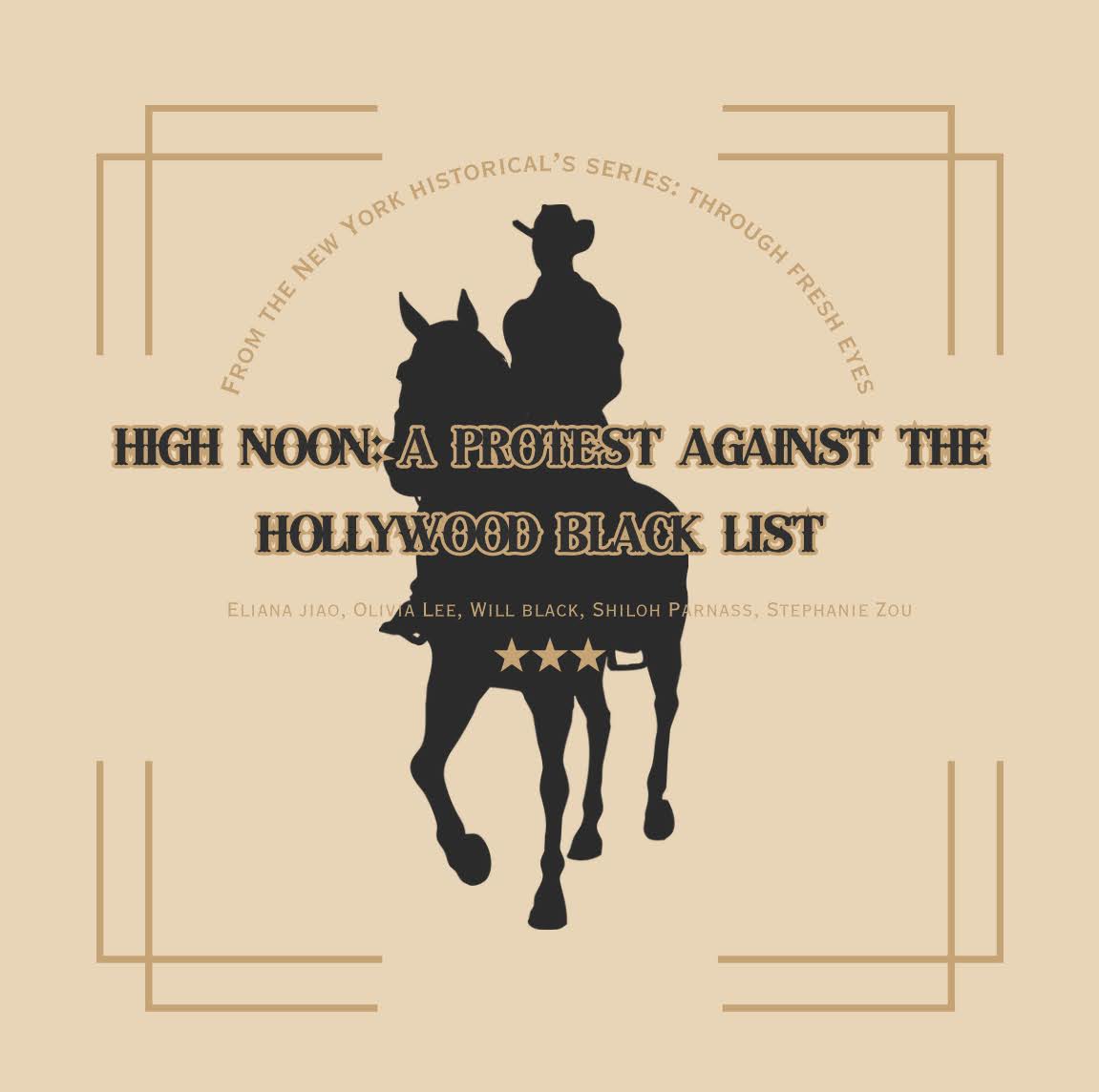
Have you ever felt that you were trying to do the right thing, while no one else is willing to stand up? Welcome to the world of Will Kane, where the good sheriff is the only defense between a community that doesn’t even want to protect itself, and a vengeful gang of vicious criminals.
In this episode of “Through Fresh Eyes,” hosts Eliana Jiao and Will Black uncover the hidden story of High Noon (1952) with three guest teen historians. In order to explain how aspects of the film reflect the overall time period it originates from, each guest historian will focus on a part of its history. Shiloh Parnass will discuss the environment of Hollywood and the film industry at the time of High Noon’s production, and the “behind the scenes” involvement of its writer, Carl Foreman, and how he created a story sympathetic to the victims of blacklisting. Olivia Lee will analyze the narrative and symbolism contained within the film itself, and the relation between the fictional events of the movie and the true events surrounding its production and release. Stephanie Zou will explain the relevance of High Noon’s genre and setting, and the lasting role of its message in American culture. Nearly three-quarters of a century after its release, High Noon may seem one out of a long line of famous movies, but its position in a period of American history that has been covered up and ignored deserves recognition.
Carnegie & Courage: Paul Robeson
Hosts: Sid, Lukas, Nadia, Christina, Sharika | Sources
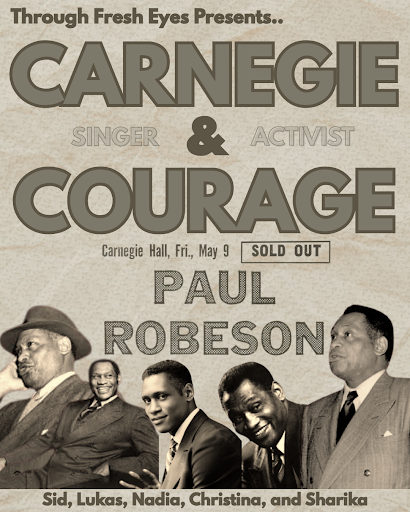
Welcome to Carnegie & Courage! In this episode, we bring you into the world of Paul Robeson and his iconic concert at Carnegie Hall! Robeson was a singer and activist whose voice carried far beyond the stage. At his 1958 Carnegie Hall concert, after eleven years of being blacklisted, Robeson returned with a program that spanned spirituals, folk songs, and revolutionary anthems in many languages. You’ll hear clips of that night and discover how music became his form of protest.
We will discuss the Peekskill Riots after his Civil Rights Congress concert and how that led to the House of Un-American Activities Committee surveilling him! We’ll step inside the charged atmosphere of Carnegie Hall, where the audience waited in anticipation for a voice they had been denied for over a decade. Robeson’s songs weren’t just performances — they were declarations of solidarity with people across the world. At the same time, we revisit how his words were twisted, including the infamous misquote that painted him as unpatriotic and fueled attacks on his reputation. Stripped of his passport and cut off from audiences abroad, Robeson still found power in returning home to Carnegie Hall, where his performance became an act of resistance for all to look up to!
Salt of the Earth: Hope During the Red Scare
Hosts: Adeja, Maggie, Kaveh, Stephanie, and Nadia | Sources
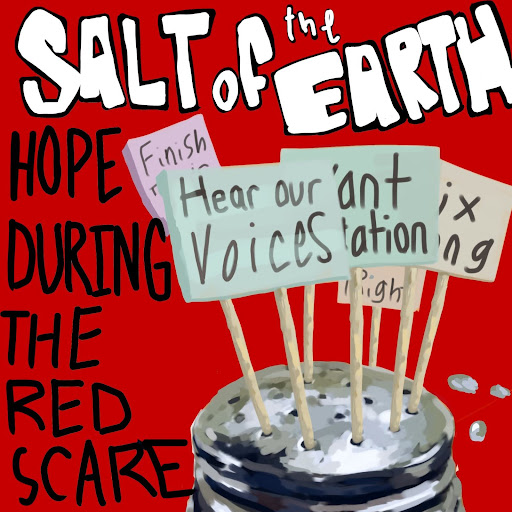
In this episode, The New York Historical’s Teen Tech Scholars will take our listeners on an exploration through the groundbreaking film Salt of the Earth. We’ll be traveling to 1950’s Zinc town, New Mexico to uncover the history of the Empire Zinc mining strike that inspired the film, where the wives of miners took the union’s demands into their own hands. The Red Scare had a profound impact on both those who worked on the film and how it was received by audiences around the world. Salt of the Earth was blacklisted for fifty years after its release, only distributed to union-run theaters as it was viewed by the government as communist propaganda. Nevertheless, audiences praised the work for its spotlight on the struggles of Mexican-American miners as well as the female quest for self-determination. It made many Americans feel hopeful that a future would exist where their voices could be heard. The movie discusses many important issues including class struggle, poverty, racism, worker’s rights, and sexism. We’ve chosen to view the film’s characters and themes through a contemporary feminist lens, focusing on the main character Esperanza and how she mobilized the women in her community to fight for better living conditions and a voice within the labor union.
Canvas of the Un-American: Ralph Fasanella and the McCarthy Press
Hosts: Krish, Tristan, Fatima, Alex, Hyaemhin | Sources
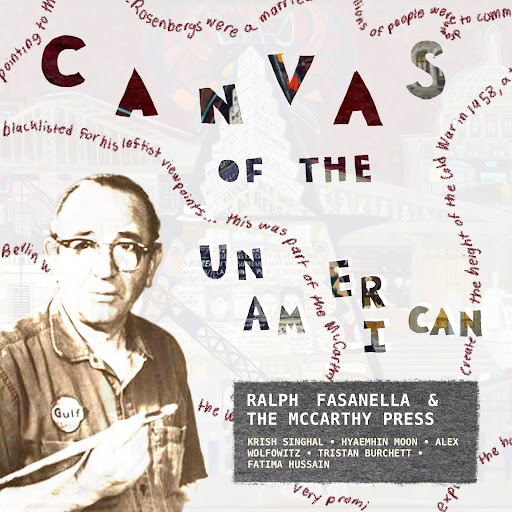
In this episode of the Through Fresh Eyes podcast, a teen researched, recorded and edited podcast, we talk about Ralph Fasanella, and how he challenged what it meant to be American through his art. Fasanella was blacklisted in the U.S. and labeled a communist by the government. After the death of the Rosenbergs, a couple convicted of selling nuclear secrets to the Soviet Union and executed by the United States, Fasanella created the McCarthy Press. In this episode, we discuss the piece of artwork and Fasanella’s use of symbolism to describe the paranoia and fear surrounding atomic weapons and the rivalry between the U.S. and the Soviet Union.
The episode begins with a discussion featuring Labor Historian and Social movement expert Alex Wolfowitz. He focuses on Fasanella’s early life, career, and motivations for sympathizing with communism. He then explains the history of Blacklisting - Hollywood actors and artists being kicked out of their jobs due to suspected communism. Then, Hyaemhin Moon, a political trials expert, discusses the tragedy of the Rosenbergs and how it relates to Fasanella. After, a thorough analysis of the painting is performed by critically acclaimed artwork experts Fatima Hussain and Tristan Burchett. The episode concludes with each respective expert voicing their opinion about what it means to be “Un-American”.
Swinging the Classics: Hazel Scott and the Red Scare
Hosts: Noah, Yael, Luna, Ryan, Elizabeth | Sources
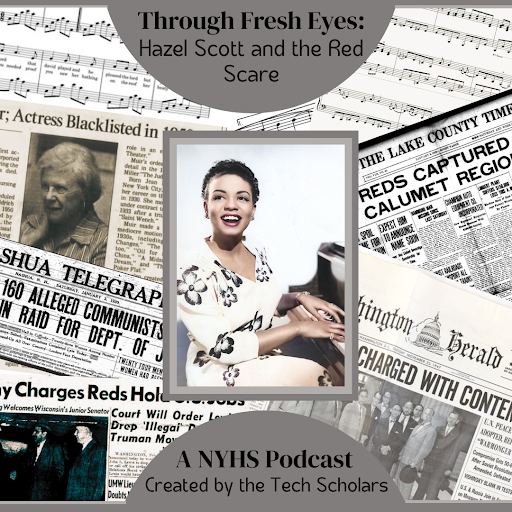
This episode of the Through Fresh Eyes Podcast explores the life of musician and actor Hazel Scott. Born in Trinidad, Scott was a child prodigy on the piano, and moved to New York when she was four years old. During her career, she developed her own unique music style, blending classical and jazz through a technique which came to be known as “swinging the classics.” Scott acted in multiple Hollywood films and was the first black person to host her own TV show, called The Hazel Scott Show. She was an activist and anti-segregationist, and refused to perform at segregated venues. She also refused to play roles in films that stereotypically portrayed her. Her career took place during the second Red Scare, which is when many Americans held widespread fears of communism, and the government sought to accuse and expose public figures as being communists, even if they weren’t. Scott was unfortunately accused of communism, despite not being a communist, and testified to HUAC, or the House Un-American Activities Committee, as an attempt to clear her name. This episode will dive into how the Red Scare affected Americans like Hazel Scott, and how her music and artistic career was an influential part in the fight for an equal society during troubling times. Tune in to “Swinging the Classics: Hazel Scott and the Red Scare” to learn more about the history of Hazel Scott.
Too Salty for the Screen. Salt of the Earth: A reflection on McCarthyism, Censorship, and Enduring Resiliance
Hosts: Jaya, Pallavi, Gabriel, Suhayle, Hana | Sources
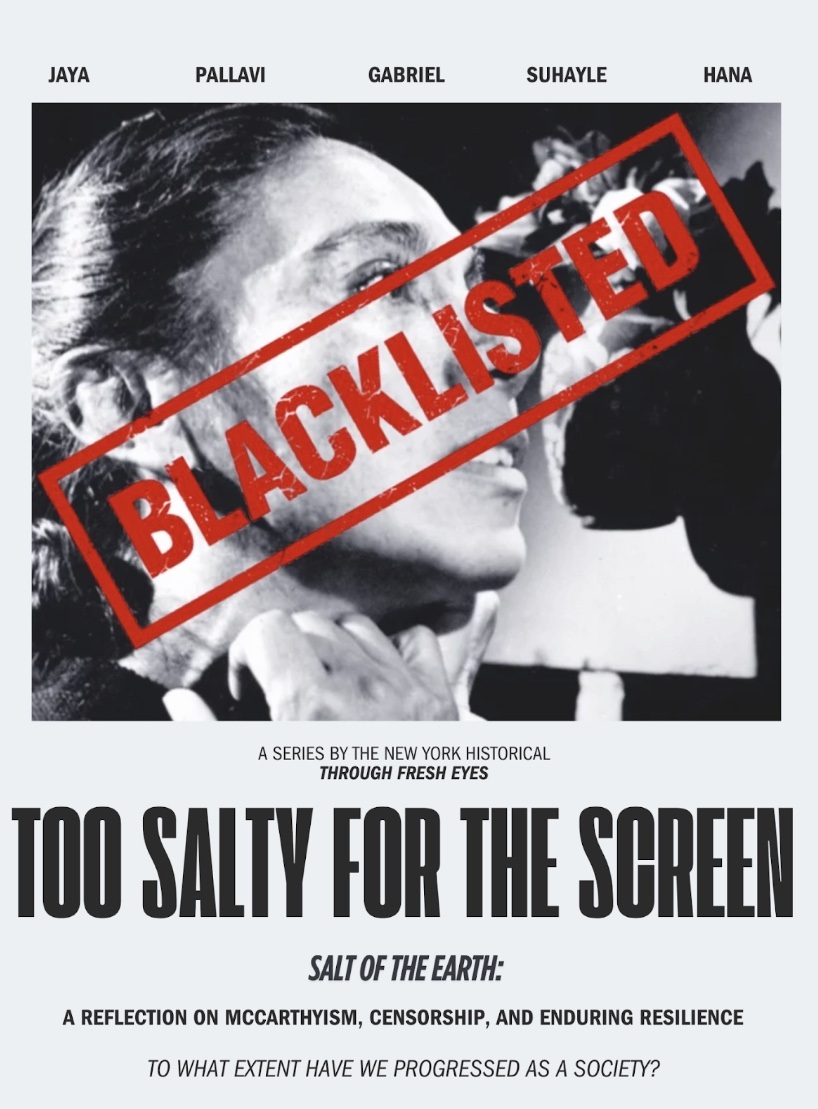
This episode is brought to you by the New York Historical series Through Fresh Eyes, featuring teen historians researching and presenting works of art displayed in the museum’s new exhibit, “Blacklisted: An American Story”. In this episode, hosted by Jaya Smith, Hana Cheng, Suhayle Iriarte, Gabriel Barrios, and Pallavi Khanna; we are going to reflect on the 1954 film Salt of the Earth and the era in which it was created, the Red Scare. In a heroic and outstanding effort to go against the blacklist and push for progress, Biberman and the rest of the crew - who were also already blacklisted - created one of the first independently financed and produced films outside of the Hollywood Studio system about the 15 month long Empire Zinc Company strike in Grant County, New Mexico organized by Mexican-American labor workers. Criticized for its communist ideals surrounding organized labor and communal leadership, it was banned in the United States and blocked from American screens before even being released. Its production was overshadowed by anti communist protests and government interference, but due to its success in Europe, was rediscovered after the end of the blacklist era and the termination of the House Un-American Activities Committee (HUAC) in 1975. The film contains realistic depictions of race, gender, and economic inequality, and is an exemplary display of the unrepresented fight for justice, equality, against government corruption and censorship in the 1950s.
McCarthy Press
Hosts: Lucia, Jiya, Sam, Anya | Sources
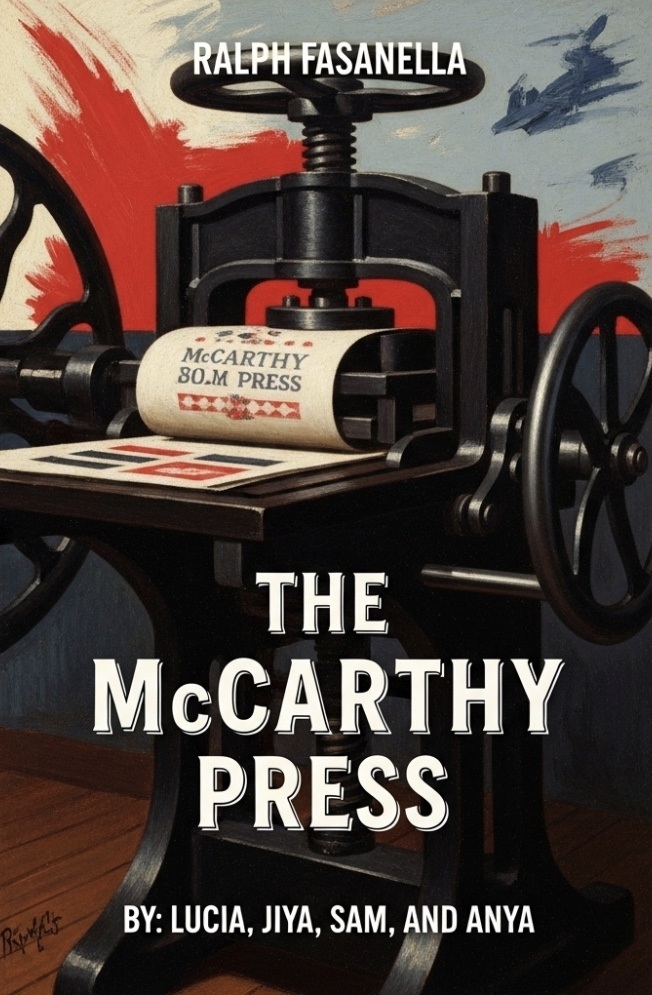
This podcast examines Ralph Fasanella’s painting McCarthy Press as a visual response to the political climate of the McCarthy era. The episode analyzes how specific elements of the painting reflect Fasanella’s background as a labor organizer and his perspective on government surveillance, media influence, and public reaction during the Red Scare. It discusses key historical events, including the execution of Julius and Ethel Rosenberg and the role of the press in shaping public opinion. The podcast focuses on the individual and social impacts of blacklisting, using the artwork as a primary source to explore themes of censorship, identity, and political pressure in 1950s America.
Hazel Scott & Her Legacy
Hosts: Kayla, Jasmin, Sherry, Sarah, Isabella | Sources
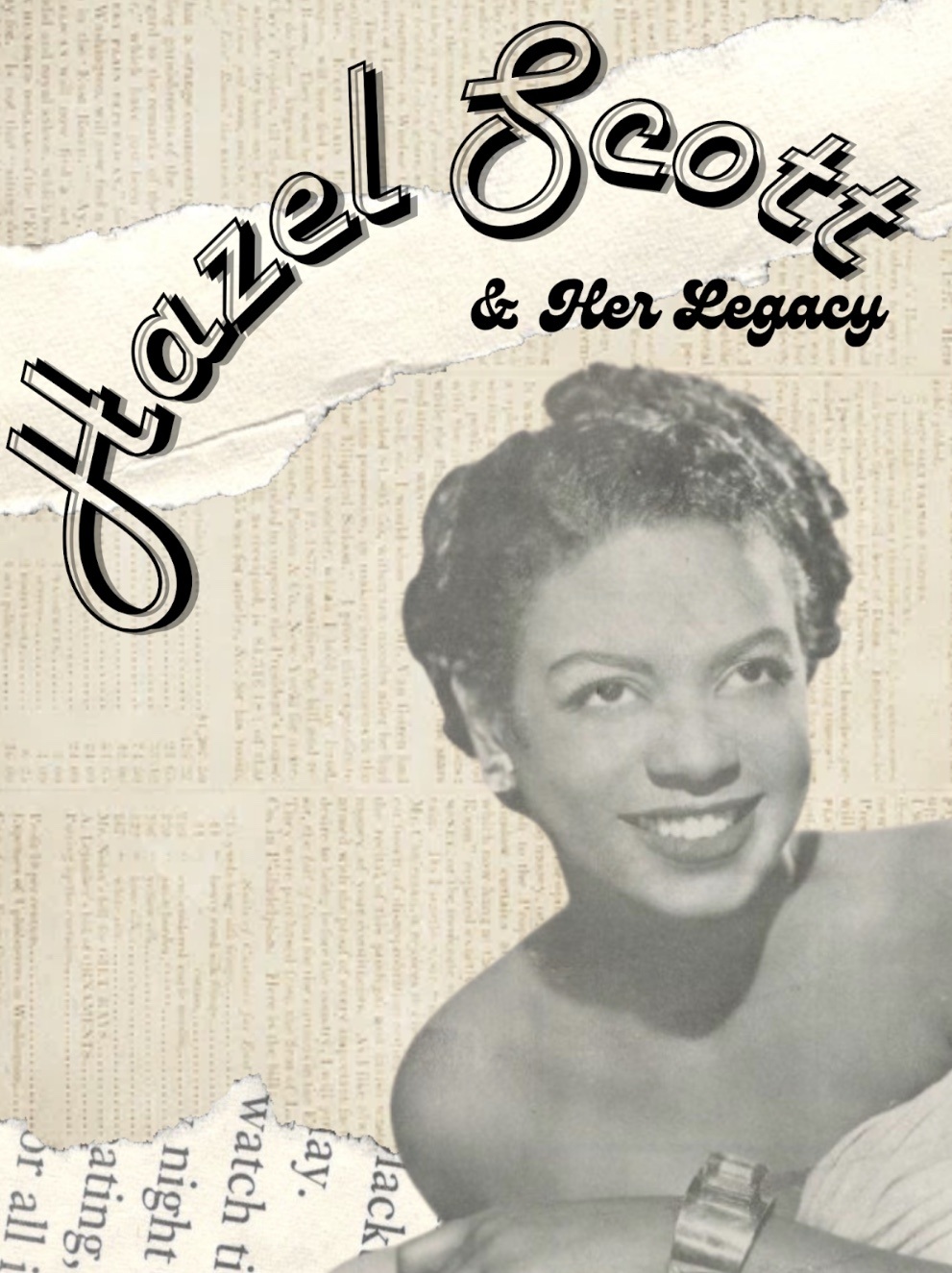
In this episode, we will be discussing the life of Hazel Scott (1920-1981), a Trinidadian classical and jazz pianist, and how she, like other creatives, were affected by the Second Red Scare and McCarthyism. Segments include historical context on the time period, information on her early life that defined who she was as a person, her music and career in Hollywood, and finally how she was blacklisted and the aftermath of it. Throughout our podcast we use piano music composed by Hazel Scott such as herself and dissect the meaning behind her musical decisions. Hazel Scott herself grew up during a time period of racial segregation which informed how she stood up for her rights as a Black woman. She used the piano to her advantage as a way of expressing her beliefs. For example, “Black & White are Beautiful” highlights the differences between races which led to a stunning performance that combined both jazz and classical genres. Even throughout her Hollywood career, she continuously fought Black oppression despite the threat of the House of Un-American Committee. She was targeted for her potential ties for communism during a period where America was fearful of the Soviet Union. Join us as we aim to share her story to ensure that her memory will live on with new, fresh eyes.
From Iron Curtain to Stage Curtain: The World of Sholom Aleichem
Hosts: Callum, Emma, Iris, Jacobs, Francesca | Sources
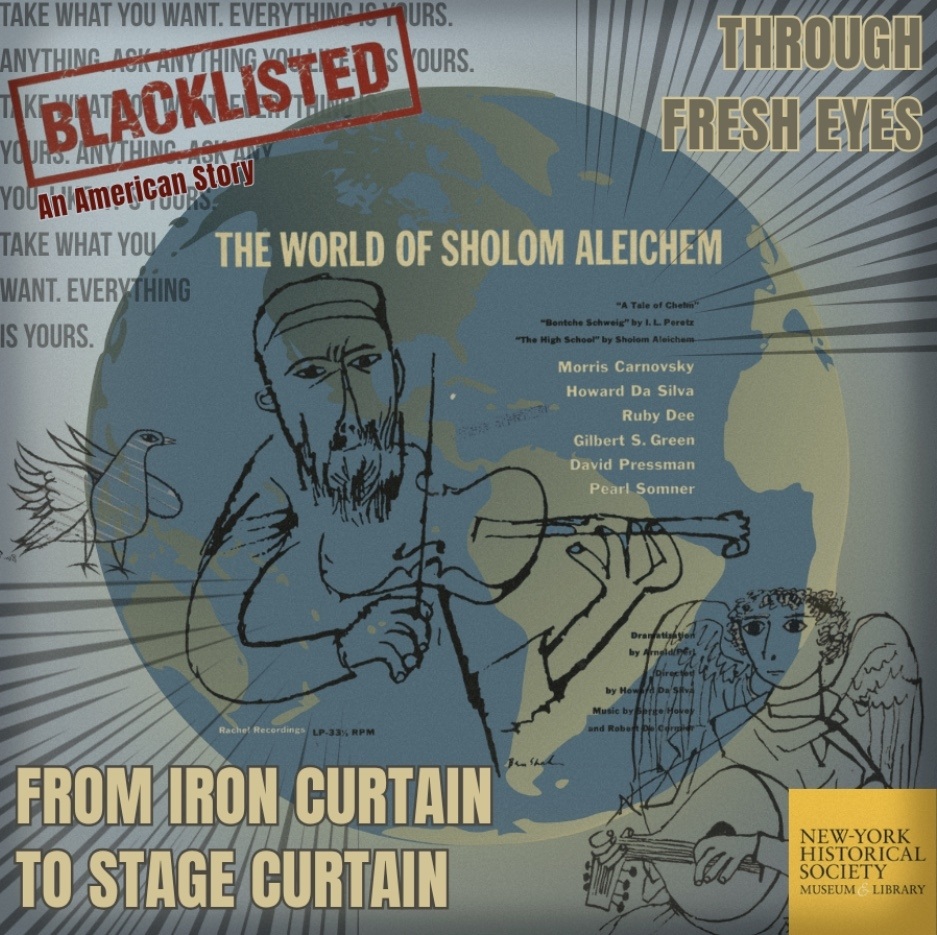
Join Callum Hicks, Emma Li, Iris Auyeung, Amily Jacobs, and Francesca Howard as they embark on a fascinating journey into The World of Sholom Aleichem. The World of Sholom Aleichem is a tale of hardship, courage, community, and hope, revealing many lessons still relevant in today’s world. As Jews continue to be written out of the dominant narrative, it is more important than ever to pay homage to their resilience in the face of centuries of oppression, adversity, and hate. By shedding light on the plights of the Jewish people during the McCarthy era blacklists, and the inspiring ways Jews have used art activism as an agent for change, these young podcasters call attention to the forgotten histories of the Jewish people. The World of Sholom Aleichem will make you laugh, cry, and hopefully think a bit more critically about the narratives you’re hearing.
High Noon
Hosts: Brina, Emma, Khloe, Viv | Sources
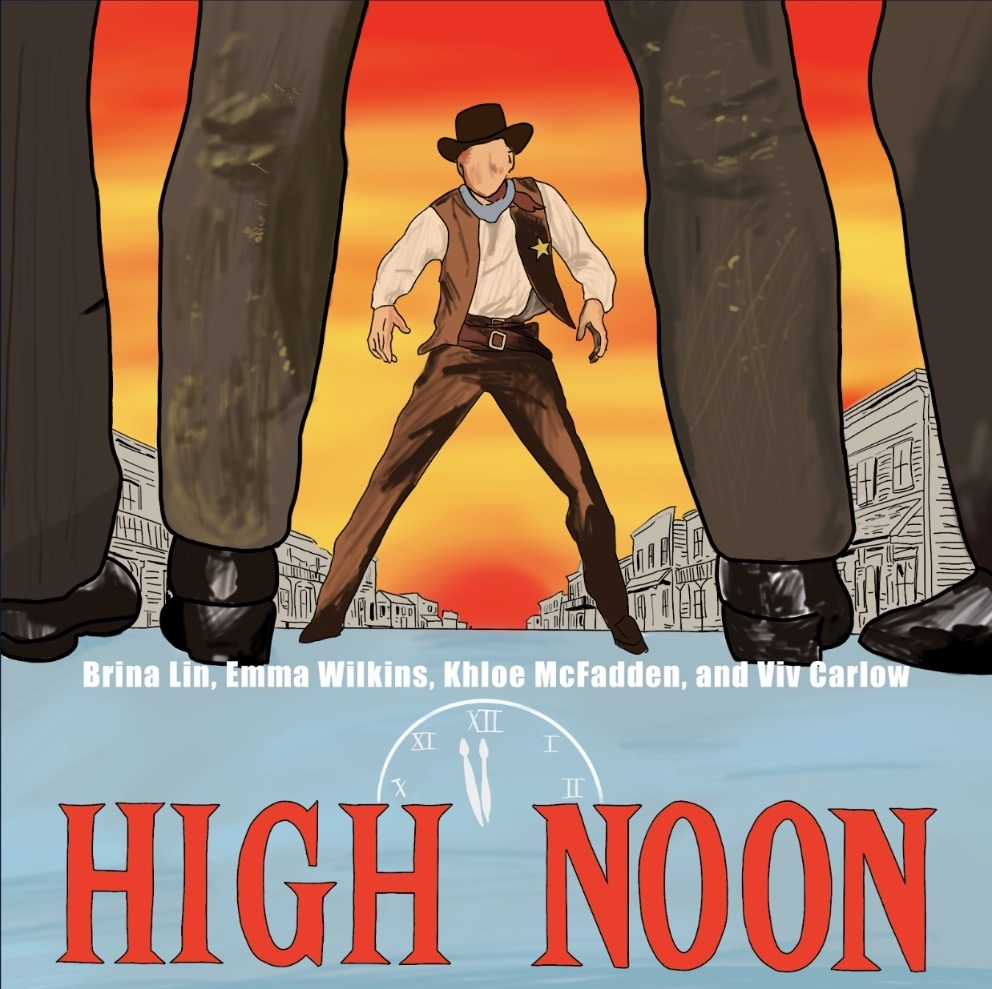
Our podcast episode deals with the 1952 American western classic High Noon and its connection to the Red Scare. We explore what the film has to do with Hollywood’s response towards the Age of McCarthyism and their actions during the blacklisting. The story of the main character, Will Kane, serves as an allegory to the blacklisting in Hollywood and the people who experienced it. Throughout the episode, we discuss how High Noon was used to critique how society reacted to Hollywood during the blacklisting, its connection to the present day, and our own experience on watching the film. In addition, we get to hear from someone who watched the film the year it came out and their interpretation of it in relation to the events of the Red Scare. Listen as we uncover the deeper meanings behind the classic western film, High Noon.